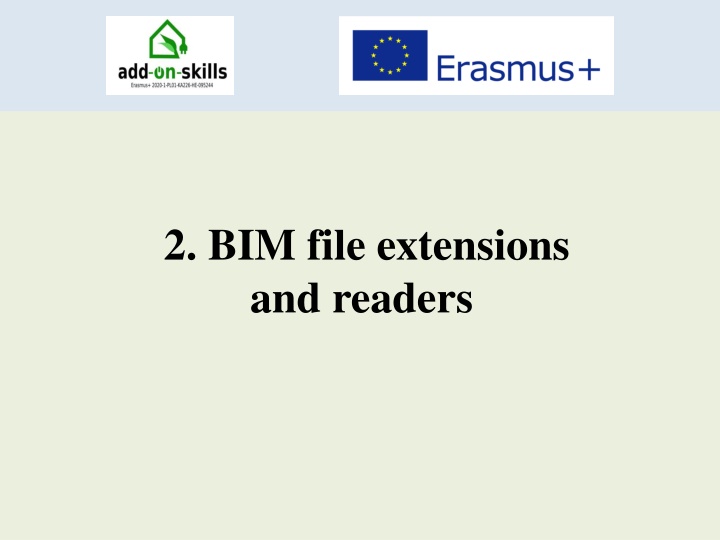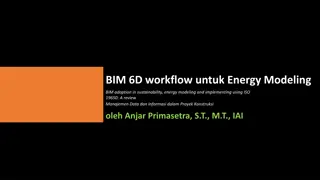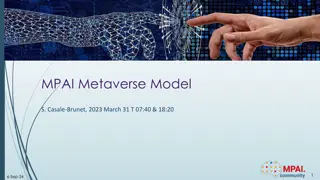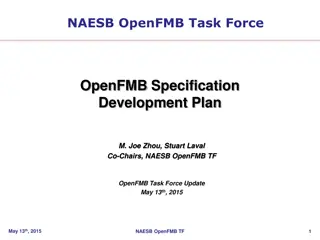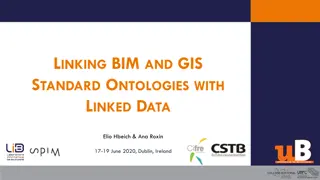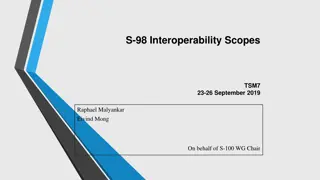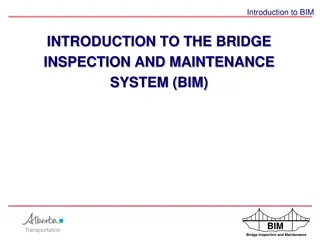Widely Adopted BIM Software and Interoperability Concerns
In AEC, Revit, Tekla Structures, Bentley MicroStation, and ARCHICAD are leading BIM software with unique features and drawbacks. Achieving interoperability among different BIM software is crucial for seamless collaboration in construction projects.
Download Presentation

Please find below an Image/Link to download the presentation.
The content on the website is provided AS IS for your information and personal use only. It may not be sold, licensed, or shared on other websites without obtaining consent from the author.If you encounter any issues during the download, it is possible that the publisher has removed the file from their server.
You are allowed to download the files provided on this website for personal or commercial use, subject to the condition that they are used lawfully. All files are the property of their respective owners.
The content on the website is provided AS IS for your information and personal use only. It may not be sold, licensed, or shared on other websites without obtaining consent from the author.
E N D
Presentation Transcript
2. BIM file extensions and readers
BIM FILE FORMATS you need to support these workflows in terms of BIM, the following are the most widely adopted inAEC: Revit Files (RVT) Autodesk Revit lets AEC teams design and document building structures, floor plans, walls and other elements. Revit also equips them to analyze building performance, visualize its structures and collaborate across different teams.
Although Revit is the industry leading program, it does have its drawbacks, namely in terms of its cost and its rigidity for designers. Regarding cost, every member of the construction team is required to have a Revit license -- a potentially infeasible ask for large teams. As for designing, while Revit offers a set of standard rules, architects might find Revit too constraining. Nonetheless, Revit is the most widely used software in BIM. As a result, using Revit offers many AEC firms a higher capacity to collaborate because they can expect their partners to use Revit. However, there are many niche and specific parts to BIM which necessitate different software.
Tekla Structures Tekla Structures is a BIM suite capable of generating 3D models of building structures while also incorporating their use of different materials, such as steel, concrete, glass and others. With Tekla Structures, you can develop very large models and enable multiple, different users to simultaneously use the same project. However, its high-powered feature set is also very difficult to use and, as a result, requires operators with considerable expertise. It s also expensive.
Bentley MicroStation (DGN) Originally a Computer Aided Design (CAD) suite, AEC users are using Bentley MicroStation for BIM. Like Revit and Tekla, MicroStation offers 3D modeling and visualization. However, it also has a strong emphasis on enabling for lifecycle management and has several features that are more suited for civil engineering workflows than Revit andARCHICAD.
Graphisoft ARCHICAD ARCHICAD follows Revit in adoption for BIM. It has similar features and capabilities to Revit and, thanks to its significant market adoption, facilitates collaboration between different AEC companies using the same software. How toAchieve BIM Interoperability While there are market leaders in BIM, it s clear that there are a number of different software suites in use worldwide. Ultimately, achieving interoperability is a major concern and you can address it by providing applications that can read different file formats, be it open standards (such as IFC) or proprietary ones (e.g., Revit, DGN, etc).
Why Spatials SDKs? (1) You can use Spatial s software development kits (SDK) to work with applications with 3D model geometry. Your applications can perform geometric operations such as clash detection as well as optimize geometry for visualization, analysis and/or collaboration. In fact, you can also offer your end-users the ability to create and manipulate new 3D models. In terms of supporting collaboration through interoperability, Spatial s BIM SDKs will enable your application to import 3D models from Revit, MicroStation and IFC.
Why Spatials SDKs? (2) Besides providing feature capabilities, Spatial also frees you from the time and resource-heavy process of supporting the data libraries and underlying code. This is a difficult task, especially since the data libraries (for interoperability) come from different vendors. Spatial will manage this work; you can focus on reducing your time to market and keeping your users satisfied. If you would like to know how Spatial s SDKs will help you increase your revenue, gain a first mover advantage and keep-up with evolving market demand, contact us today.
REVIT FILE EXTENSIONS Click on the picture or here: https://youtu.be/k9cFq3V8qLM
Dr.Daiva Makutnien, d.makuteniene@vtdko.lt Vilnius College of Technologies and Design
This project has been funded with support from European Commission. This publication [communication] reflects the views only of the author, and the Commission cannot be held responsible for any use which may be made of the information contained therein.
